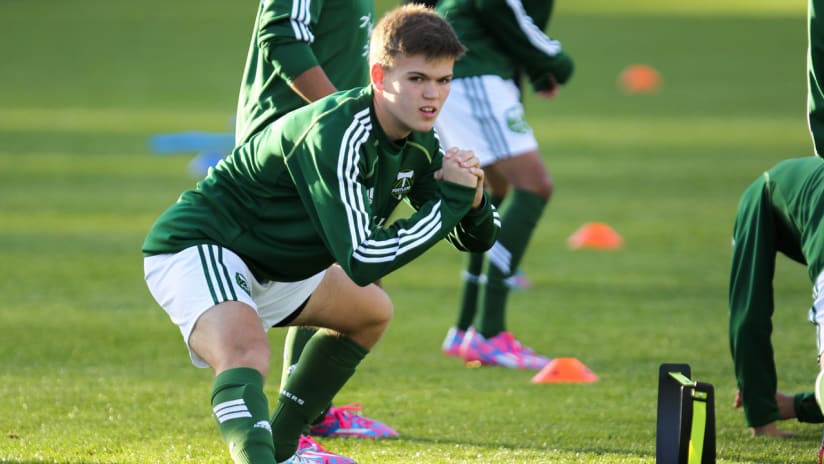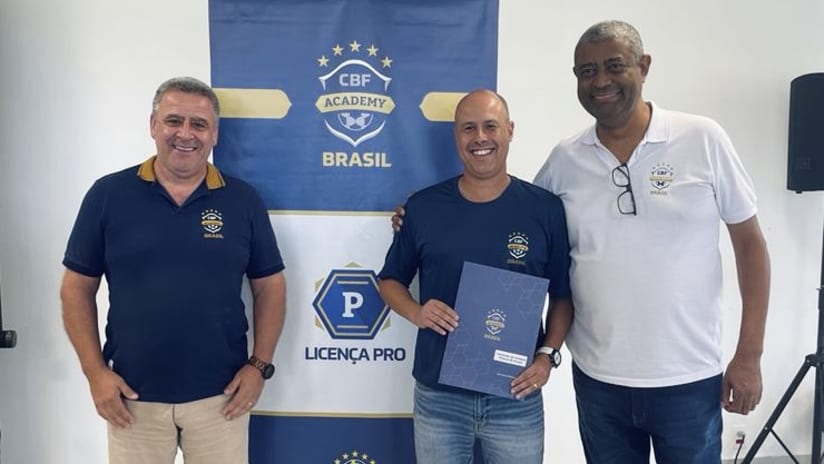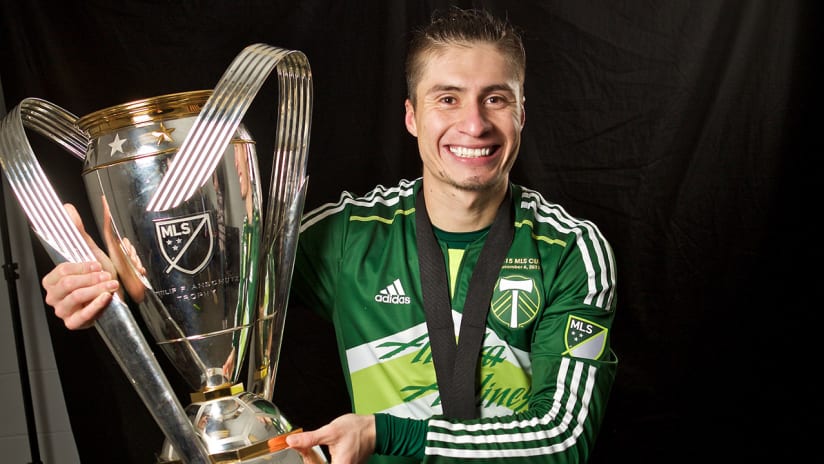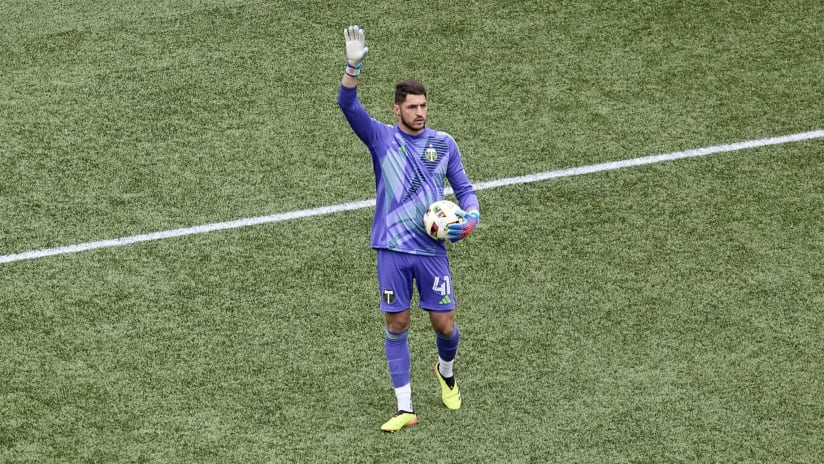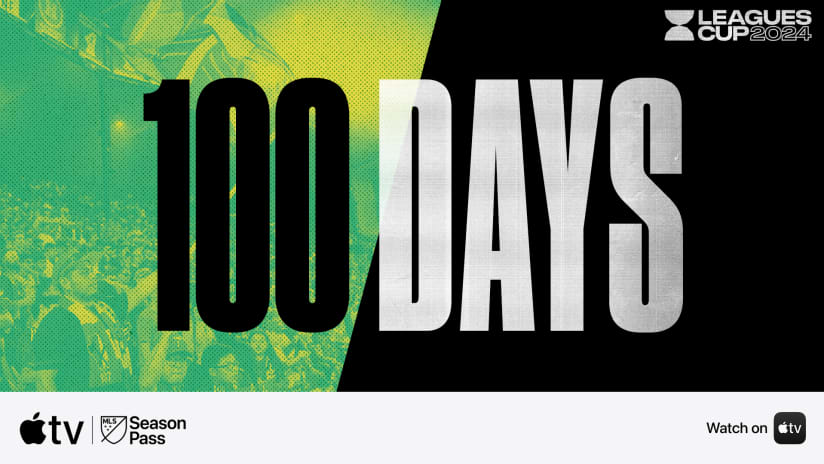Editor's Note: In this special three-part series, Timbers.com explores the growth of the burgeoning Timbers Academy. In Part I, it examined the overall structure of how it is set up and works, Part II takes a look at how it aims to develop players for the first team, and Part III will show what it means to be an Academy player and progress through the club's system.
PORTLAND, Ore. – Developing a young player for the Portland Timbers first team begins as soon as that player can kick a ball and watch a Timbers game. From Timbers camps to Oregon Youth Soccer Association Pre-Academy teams, to adidas Timbers Alliance Clubs, to Academy teams, everything is structured to begin building an affinity and knowledge around the Portland Timbers.
"The very young player will get inspired by coming to the games, watching the team on TV, and having a local hero," says Academy director Mike Smith. "That, along with the curriculum and the things we're giving out and the camps we're doing, will help them play more and become more familiar with the ball."
But there's more to developing first team players than simply inspiring Oregon's youth to play more soccer. You need to establish a pipeline of talent.
Smith explained that one of his first priorities is getting talented young players into the regional training centers as early as possible, giving them access to high-level coaching and competition that they may not encounter with their local club teams.
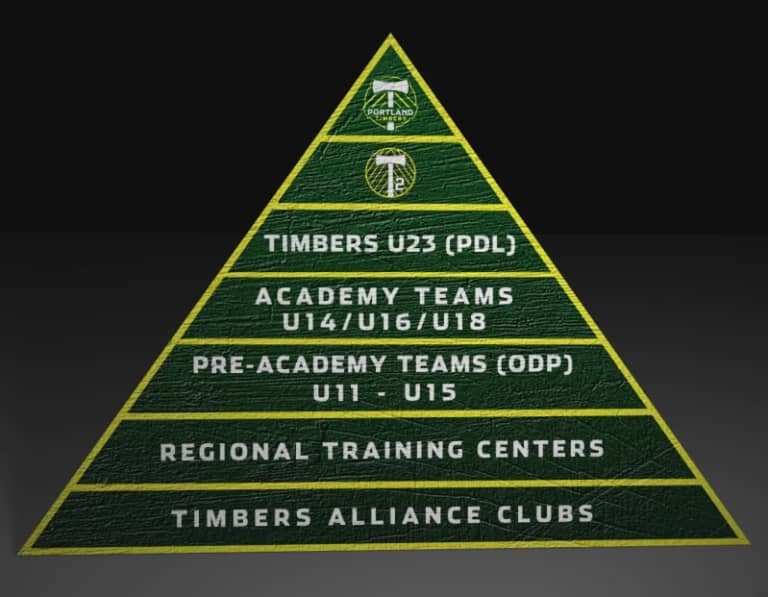
Once Smith and his team of coaches have identified the most talented players in the regional training centers, those players will have the chance to progress onto the newly created Timbers' U-14 Academy team. There, they'll be practicing in a full-time professional environment with a trained coaching staff and exposure to the highest level of youth competition in the region.
For Timbers U-16 Academy coach and T2 assistant coach Andrew Gregor, the training environment must push young players daily out of their comfort zones and force them to fight for their spots in the starting lineup.
"You never want the players to really be too comfortable," Gregor said. "Obviously, you still want them to have fun, but for the most part it's all about how we can push them, whether that's pushing them in the individual environment, whether it's pushing them physically or mentally, or whether it's pushing them up a level."
Everything that the Academy does is inspired and influence by the first team, from training to matchday preparation. This, Gregor explained, is all a part of the process of preparing young players who may one day have the chance to play for the Timbers first team.
"As far as preparation, we try to emulate the first team as much as we can. Everything from team talks, video work, and schematics, we try to keep similar to what they do so that when a kid potentially has the chance to go to the first team and he goes into that environment, he's not going to see something he hasn't seen before, which means he's going to be even more comfortable and it's going to be less of a transition for him to really progress and do well for the first team."
Playing for the Timbers Academy, though, requires serious adjustments on the part of the young player. The priorities of some of the more social aspects of high school—parties, clubs, team sports—can change for a player as he gets a chance to progress through the Academy.
"Coming into the Academy, it's completely different from anything they've ever done before," Gregor said. "When you come into the Academy, you're going to school, you're studying, you're playing soccer, and you're resting. You'll have to make some sacrifices, but those sacrifices in the long run are worth it as to what opportunities you can get by being in the Academy."
Academy players that continue to progress will move from one rung of the pyramid to the next, from U-14 to U-16 to U-18. But what awaits the academy player once he graduates from the U-18 team?
Not every young player is ready to become a professional at eighteen years old. For some, it's critical that they continue their personal development in college.
To keep track of all these former academy players, the Timbers continue to use their Timbers U-23s USL Premier Development League (PDL) team. The PDL side will also allow many ex-Academy players to train in a first team environment right through their summer breaks—while also maintaining their amateur collegiate eligibility—giving the Timbers coaching staff the opportunity to monitor their progress and evaluate their readiness for the first team.
Add in the newest addition to the Timbers' developmental pyramid, the new USL-level T2 team, and the club has yet another developmental tool at their disposal.
Smith says that the Timbers' USL franchise will provide a critical link between the lower rungs of the developmental pyramid and the first team. It won't, however, necessarily be the silver bullet that elevates Academy players into first team stars.
"I think that we're cognizant of the fact that not every 18-year-old is ready to jump right into an environment like T2 and play USL just yet," Smith said.
Still, coach Gregor believes that T2 will provide something unique: a tangible goal for Academy players to aspire to.
"Now there's another level for those kids to shoot for that is just one more step closer to the first team and another part of that development pipeline that the club has wanted to create."
Look for Part III next Tuesday as Timbers.com explores how Timbers Academy players are progressing through the program.

